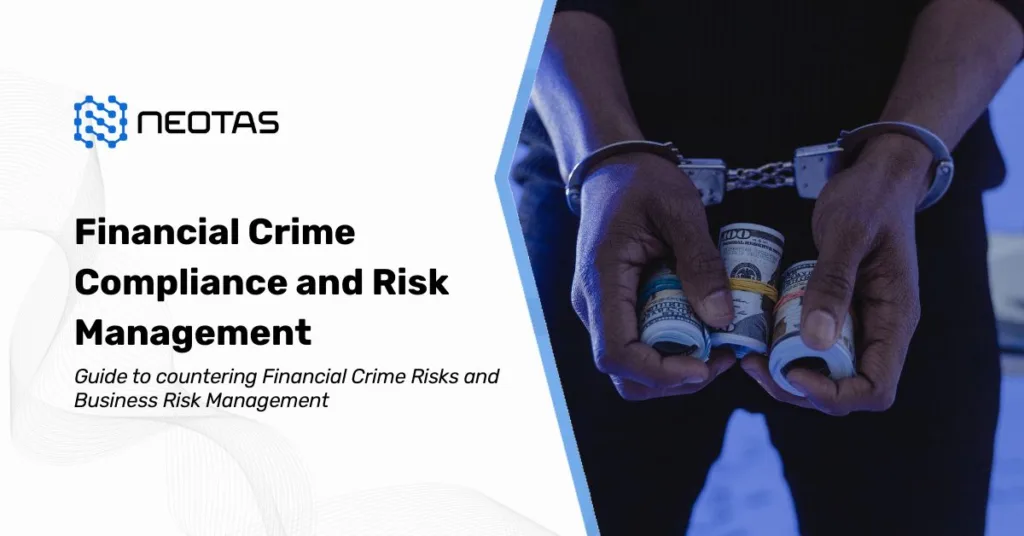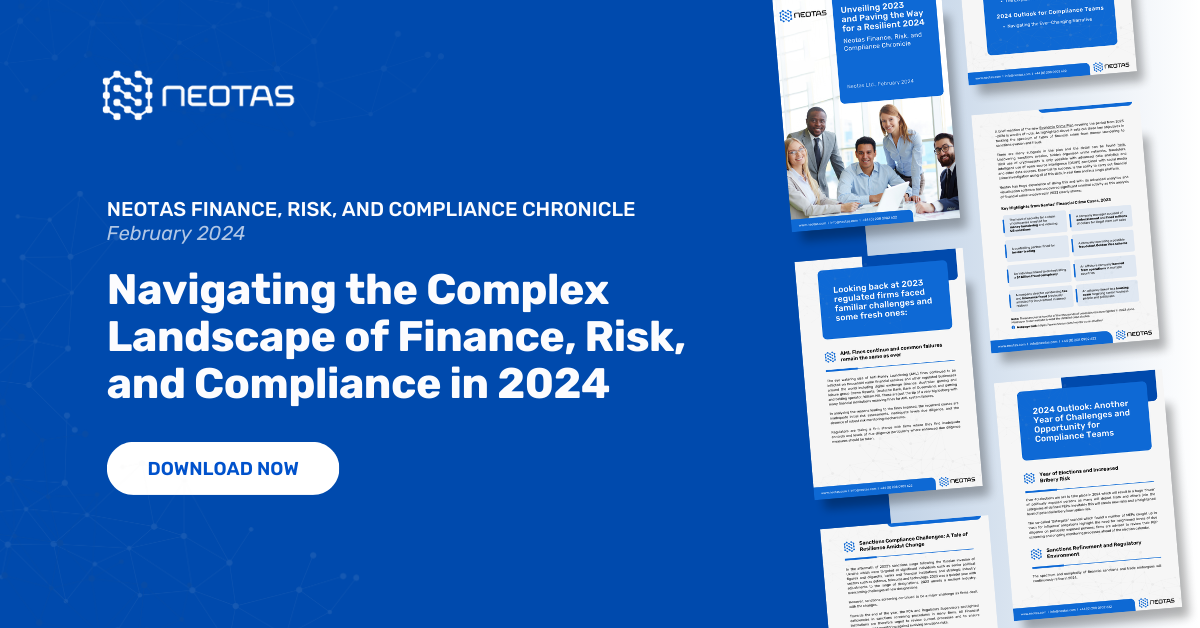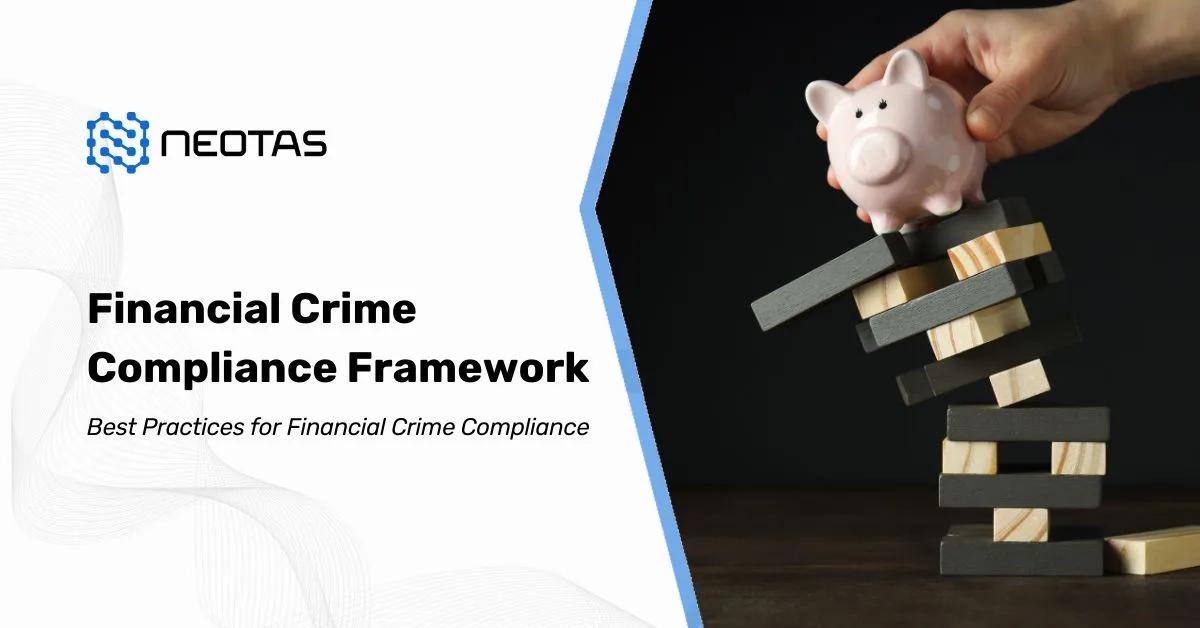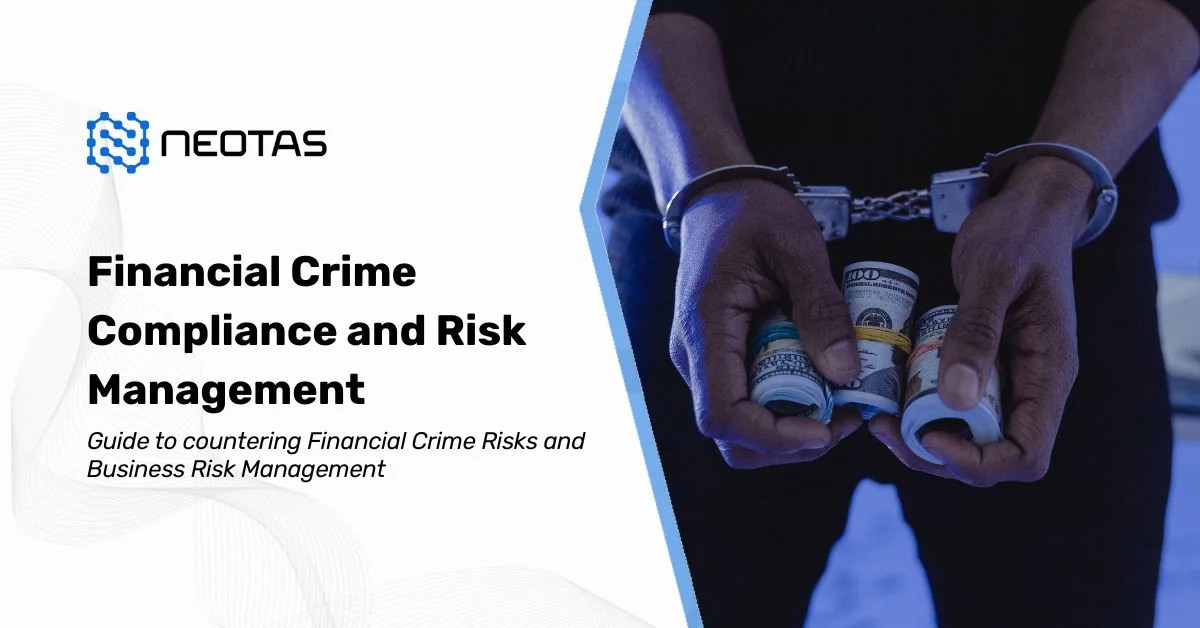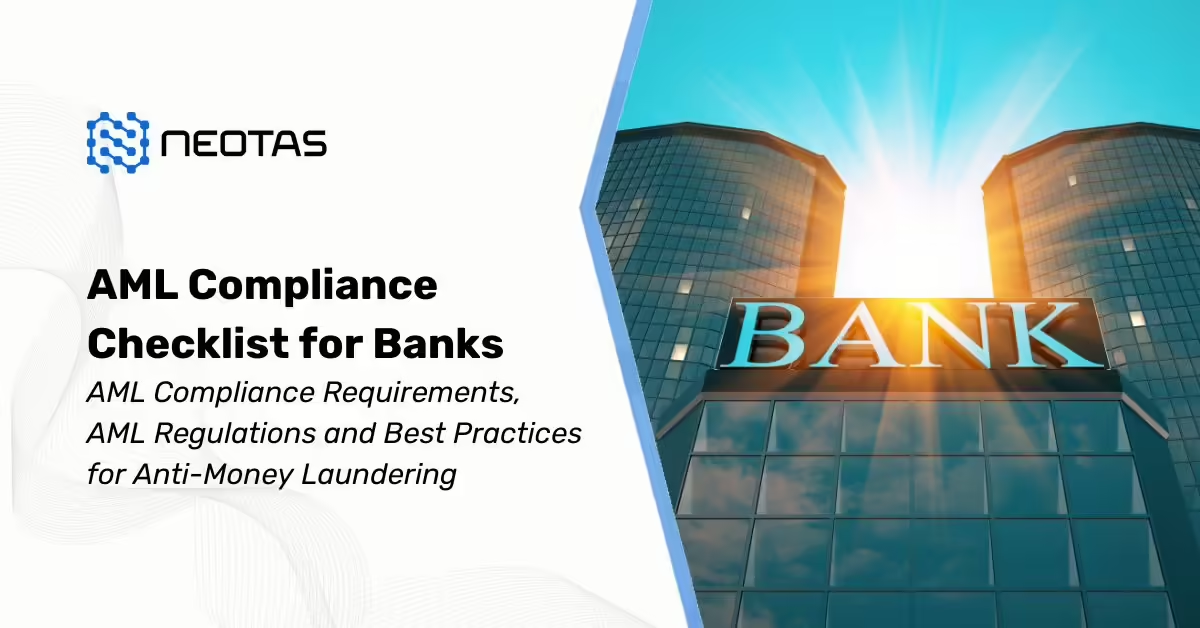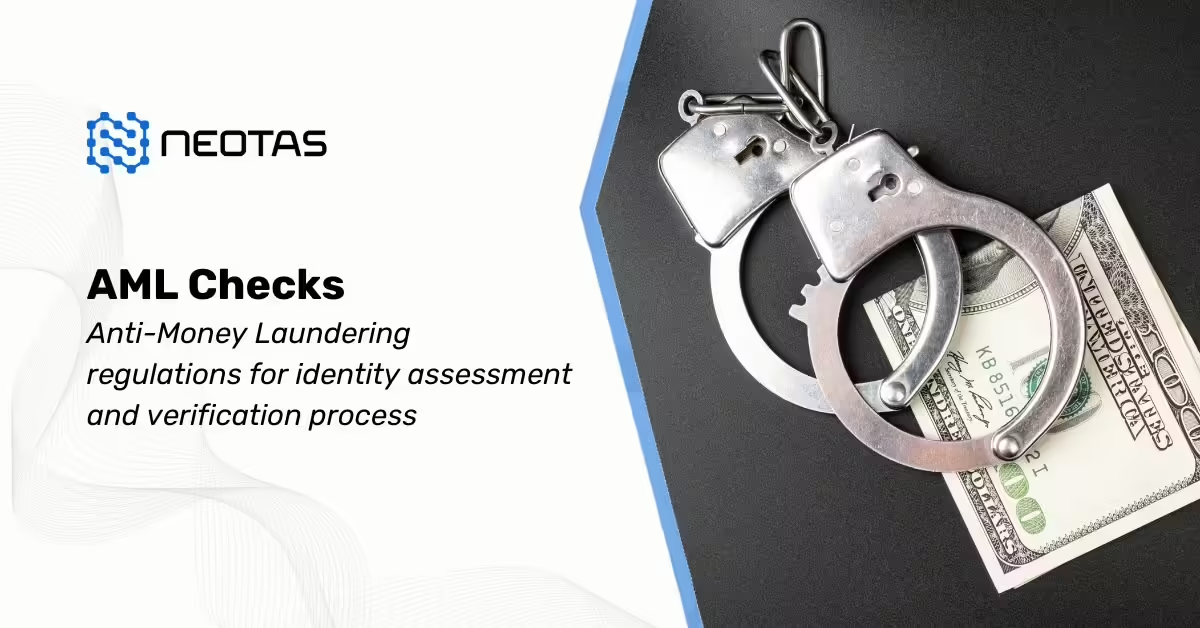Financial Crime Compliance
Guide to countering Financial Crime Risks and Business Risk Management
Financial crime has emerged as one of the most pressing global challenges in today’s interconnected economy. From money laundering to cyber-enabled fraud, these crimes pose severe threats to the financial sector’s integrity, businesses’ sustainability, and governments’ ability to regulate effectively.
This guide is designed to provide an in-depth understanding of Financial Crime Compliance (FCC), its significance, and its role in safeguarding financial institutions.
What is Financial Crime Compliance?
Financial Crime Compliance (FCC) refers to the policies, frameworks, and operational measures implemented by financial institutions and organisations to identify, manage, and mitigate risks associated with financial crimes.
These crimes include activities such as money laundering, terrorism financing, fraud, corruption, bribery, tax evasion, and sanctions violations. FCC ensures that businesses adhere to legal, regulatory, and ethical standards designed to prevent and detect such unlawful activities.
At its core, FCC enables financial institutions to:
- Meet regulatory requirements to avoid penalties and reputational damage.
- Safeguard their operations against criminal exploitation.
- Protect customers and stakeholders from financial and reputational harm.
The scope of FCC typically encompasses Anti-Money Laundering (AML) measures, Know Your Customer (KYC) protocols, sanctions compliance, transaction monitoring, and more. It is an ongoing, multi-faceted discipline that requires consistent vigilance, innovation, and a proactive approach.
Why Financial Crime Compliance is Crucial for Financial Institutions
The financial services sector is a frequent target for criminals seeking to exploit its systems for illicit gains. Without a robust compliance framework, financial institutions face multiple risks:
- Regulatory Penalties and Fines
Regulatory authorities worldwide are increasingly strict about non-compliance. Institutions that fail to meet their obligations risk significant financial penalties and legal action. - Reputational Damage
Trust is the cornerstone of the financial services industry. Association with financial crime can severely damage a firm’s reputation, eroding customer and investor confidence. - Operational Risks
Financial crimes often lead to operational disruptions, requiring costly remediation efforts that divert resources from core business functions. - Global Security Implications
Financial institutions play a critical role in the broader fight against organised crime and terrorism. Non-compliance undermines global efforts to disrupt criminal networks and safeguard economic stability.
By implementing effective FCC strategies, financial institutions not only comply with laws but also enhance their resilience against emerging threats, promote customer trust, and contribute to the integrity of the global financial system.
Financial Crime Trends and Their Global Impact
In recent years, the landscape of financial crime has evolved significantly, influenced by advancements in technology, the globalisation of financial systems, and shifting regulatory priorities. Below are some key trends shaping the FCC landscape:
- Rise in Cyber-Enabled Financial Crimes
Cybercrime, including ransomware, phishing schemes, and identity theft, has surged as criminals exploit digital vulnerabilities. These activities often intersect with traditional financial crimes, such as fraud and money laundering. - Increased Regulatory Scrutiny
Governments and regulators worldwide are introducing stringent requirements, such as beneficial ownership transparency and enhanced sanctions regimes. This has created new compliance challenges for institutions operating across jurisdictions. - Growth of Cryptocurrencies and DeFi
While cryptocurrencies and decentralised finance (DeFi) offer innovation, they also present opportunities for money laundering and sanctions evasion. Regulators are racing to establish frameworks to address these risks. - Global Financial Integration
As cross-border transactions increase, so does the complexity of compliance. Institutions must navigate a patchwork of national and international regulations while addressing multi-jurisdictional risks. - Sophistication of Financial Criminals
Criminals are using advanced technologies like artificial intelligence and blockchain to evade detection. This raises the bar for institutions to adopt equally sophisticated compliance tools and strategies.
Global Impact: Financial crime has far-reaching consequences, from undermining economic development to enabling corruption and financing terrorism. Its estimated cost runs into trillions annually, affecting businesses, governments, and individuals alike. Strengthening FCC is critical to curbing these impacts, ensuring market integrity, and fostering trust in financial systems.
By understanding the essence of FCC and the challenges it seeks to address, organisations can better position themselves to navigate this complex yet vital area. The subsequent sections of this guide will delve deeper into the key components, solutions, and best practices that underpin effective Financial Crime Compliance.
What is Financial Crime?
Financial crime refers to a wide range of illegal activities that exploit financial systems for unlawful gain. These activities involve the manipulation, abuse, or illegal access of financial institutions, markets, and systems, often with significant economic, social, and ethical implications.
At its core, financial crime is motivated by the desire to obtain financial benefits or facilitate illicit activities. It often crosses borders, making it a complex global issue that demands a coordinated response from financial institutions, governments, and regulatory bodies.
Financial crime encompasses any illegal act that involves deception, theft, or manipulation of financial systems. These crimes are often committed to conceal illicit funds, evade taxes, or finance other illegal activities, such as terrorism or corruption.
The Financial Action Task Force (FATF) broadly defines financial crime as actions that impact the integrity of the financial system, undermine confidence in institutions, and disrupt global economies.
Types of Financial Crime
Financial crime encompasses a broad spectrum of illegal activities aimed at stealing, defrauding, or otherwise misusing financial resources. These crimes not only cause financial losses but also erode trust in institutions, distort markets, and, in severe cases, destabilise societies. Below are some of the most significant forms of financial crime and their implications.
Money Laundering
Definition:
Money laundering is the process of disguising the origins of illegally obtained funds so they appear legitimate. It’s a critical issue because it allows criminals to profit from their illicit activities without fear of detection.
Stages:
- Placement: This is the initial stage where “dirty” money enters the financial system. For instance, a criminal might deposit large sums of cash into a bank or convert it into other assets, such as precious metals.
- Layering: At this stage, the focus is on obscuring the trail of the funds. Criminals engage in complex financial transactions, such as transferring money through multiple accounts, investing in offshore companies, or buying and selling high-value items.
- Integration: Once the money has been “cleaned,” it is reintroduced into the economy as though it were earned legitimately. This could involve purchasing real estate, luxury goods, or even legitimate businesses.
Examples:
- Establishing shell companies that appear to operate legitimately but serve only to launder money.
- Purchasing properties or assets and selling them to mask the source of funds.
- Trade-based money laundering, where fraudulent invoices are used to move money internationally.
The fight against money laundering is complex and ongoing, with governments worldwide implementing stringent anti-money laundering (AML) regulations.
Fraud
Definition:
Fraud involves intentional deception for personal or financial gain. It’s one of the most pervasive financial crimes and can affect individuals, businesses, and governments alike.
Types:
- Identity Fraud: Criminals steal personal information, such as National Insurance numbers or bank details, to commit fraud in someone else’s name. This can lead to unauthorised loans, credit card charges, or even false tax claims.
- Investment Fraud: This includes schemes like Ponzi or pyramid schemes, where investors are lured with promises of high returns but ultimately lose their money.
- Credit Card Fraud: Criminals use stolen credit card information to make unauthorised purchases, often targeting online retailers.
Impact:
Fraud not only results in significant financial losses but also undermines trust in financial institutions. Victims often face stress, reputational damage, and time-consuming recovery efforts.
Governments and businesses are investing heavily in fraud detection technologies, but as criminals become more sophisticated, the risks continue to evolve.
Corruption and Bribery
Definition:
Corruption and bribery occur when individuals in positions of power abuse their authority for personal or financial gain. Bribery often involves offering money or gifts in exchange for favourable treatment or decisions.
Examples:
- Kickbacks: Officials or executives accept bribes to secure lucrative contracts, bypassing fair competition.
- Misappropriation of Public Funds: Public officials embezzle money meant for public services, leaving communities underserved and perpetuating inequality.
Global Consequences:
Corruption isn’t just a local issue; it has far-reaching implications. It distorts markets, hinders economic development, and exacerbates social inequality by depriving societies of critical resources. In extreme cases, it can lead to political instability and loss of public trust.
The fight against corruption is a priority for international organisations such as the United Nations and Transparency International, but it remains a deeply entrenched problem in many parts of the world.
Terrorist Financing
Definition:
Terrorist financing refers to the provision of funds to individuals or groups that carry out terrorist activities. The unique challenge here is that the funds may come from both legal and illegal sources, making detection particularly difficult.
Key Characteristics:
- Unlike other financial crimes, terrorist financing often involves relatively small amounts of money.
- Informal channels, such as unregulated money transfer systems, are frequently used to move funds across borders.
Examples:
- Charitable Organisations: In some cases, well-meaning donations are diverted to fund terrorism.
- Illegal Smuggling: Criminal networks involved in arms, drugs, or human trafficking often funnel profits into terrorist activities.
Efforts to combat terrorist financing involve close collaboration between financial institutions, governments, and international organisations. Strict know-your-customer (KYC) protocols and monitoring of suspicious transactions play a key role.
Cybercrime
Definition:
Cybercrime refers to illegal activities carried out using digital technologies, targeting individuals, businesses, or financial systems. As our reliance on technology grows, so does the risk of cybercrime, making it one of the fastest-growing forms of financial crime.
Types:
- Ransomware Attacks: Criminals use malicious software to lock a victim’s system, demanding payment (often in cryptocurrency) to restore access.
- Phishing Schemes: Fraudsters send fake emails or messages that appear legitimate, tricking victims into revealing sensitive information like passwords or bank details.
- Cryptocurrency-Related Fraud: The anonymity of cryptocurrency transactions makes it an attractive tool for criminals, from investment scams to money laundering.
Rising Threat:
Cybercrime is a constantly evolving challenge. The increasingly sophisticated methods used by hackers exploit vulnerabilities in digital systems, impacting businesses and individuals alike. It’s estimated that the global cost of cybercrime will reach trillions of pounds in the coming years, highlighting the urgent need for robust cybersecurity measures.
Tackling financial crime requires a coordinated global effort, combining technology, regulation, and public awareness. By understanding these crimes and their implications, we can contribute to building a safer and more transparent financial system.
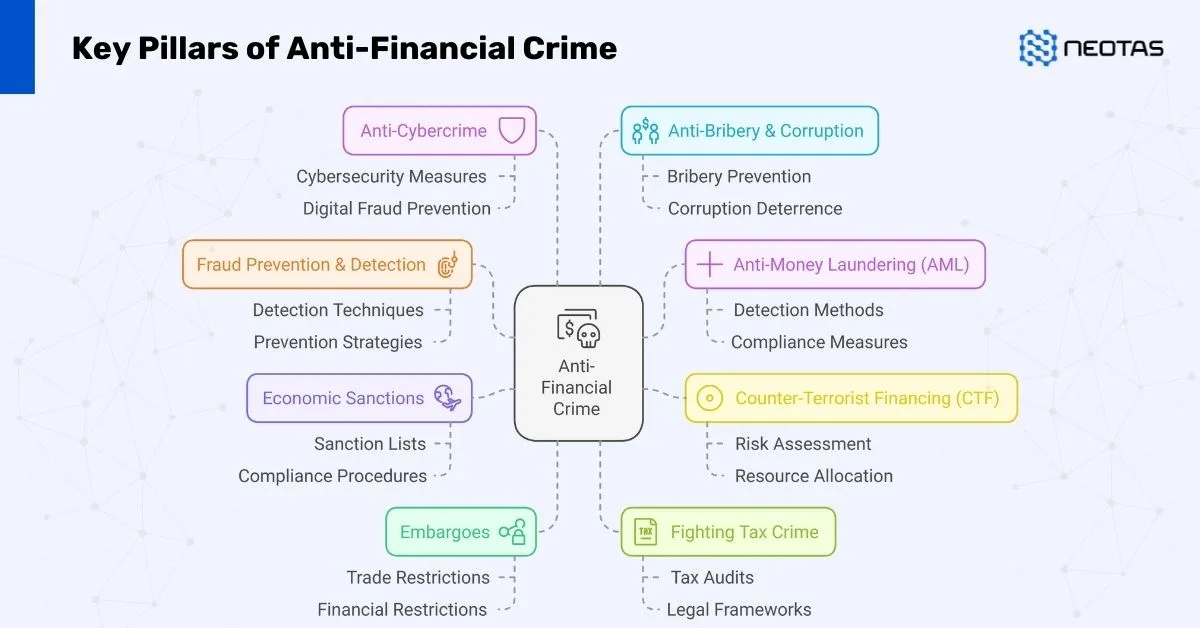
The Impact of Financial Crime
The ramifications of financial crime extend far beyond monetary losses. Its impact is profound and multifaceted, affecting economies, societies, and governance on a global scale.
Economic Consequences
- Loss of Revenue: Governments lose billions annually in tax revenue due to money laundering, fraud, and tax evasion.
- Increased Compliance Costs: Financial institutions must invest heavily in systems, training, and resources to combat financial crime.
- Economic Instability: Large-scale financial crimes can destabilise economies, especially in emerging markets, by eroding investor confidence.
- Market Manipulation: Fraudulent practices in financial markets undermine fairness, impacting small investors and eroding public trust.
Social and Ethical Implications
- Erosion of Trust: Financial crime damages the reputation of financial institutions, reducing public confidence in the financial system.
- Perpetuation of Inequality: Corruption and bribery often lead to unequal resource distribution, leaving vulnerable populations further disadvantaged.
- Funding of Criminal Activities: Proceeds from financial crime often fund other illegal activities, such as human trafficking, drug smuggling, and terrorism, exacerbating societal harm.
Case Studies of Major Financial Crime Incidents
Financial crime has taken many forms over the years, with several high-profile cases highlighting systemic issues within financial institutions and regulatory frameworks. Below are detailed case studies of significant financial crimes, including the Wirecard scandal, the Danske Bank money laundering case, the Libor manipulation scandal, and issues related to terrorist financing via charities.
Wirecard Scandal (2020):
The Wirecard scandal involved the German fintech company Wirecard AG, which was once considered a leading player in the digital payments industry. The scandal erupted when it was revealed that approximately €1.9 billion in company funds could not be accounted for.
- Key Events:
- Investigations by the Financial Times starting in 2019 raised concerns about accounting irregularities.
- In June 2020, Wirecard admitted that the missing funds likely did not exist, leading to insolvency proceedings.
- The company’s CEO, Markus Braun, was arrested, while COO Jan Marsalek fled and remains a fugitive.
- Regulatory Failures: The scandal exposed significant gaps in regulatory oversight by BaFin, Germany’s financial watchdog, which failed to act on numerous warnings about Wirecard’s practices. Critics have called for reforms to enhance transparency and accountability in financial regulations following this incident.
References:
- https://en.wikipedia.org/wiki/Wirecard_scandal
- https://blogs.law.ox.ac.uk/business-law-blog/blog/2020/10/wirecard-scandal-high-speed-rise-and-fall-fintech-company-and-its
- https://www.learnsignal.com/blog/wirecard-scandal-detailed-analysis/
Danske Bank Money Laundering Case (2007–2015)
Danske Bank’s Estonian branch was implicated in processing over €200 billion in suspicious transactions from various countries. This case is one of the largest money laundering scandals in Europe.
- Key Findings:
- The transactions were primarily linked to Russian and former Soviet states’ clients using complex networks to obscure the origins of funds.
- Investigations revealed that inadequate internal controls allowed for extensive laundering activities without detection for several years.
- Impact: The scandal highlighted severe deficiencies in compliance systems within banks and raised questions about cross-border financial oversight. It led to significant reputational damage for Danske Bank and prompted calls for stricter regulations across the banking sector
References:
- https://www.researchgate.net/publication/350465056_Corporate_Governance_and_Financial_Fraud_of_Wirecard
- https://blogs.law.ox.ac.uk/business-law-blog/blog/2020/10/wirecard-scandal-high-speed-rise-and-fall-fintech-company-and-its
Libor Manipulation Scandal (2012)
The Libor scandal involved major global banks manipulating the London Interbank Offered Rate (Libor), which serves as a benchmark for interest rates on various financial products.
- Mechanism: Banks submitted false data regarding their borrowing costs to influence Libor rates for profit on derivatives and loans.
- Consequences: The manipulation affected trillions of dollars in financial contracts globally. It resulted in hefty fines for several banks and raised critical concerns about ethical governance and the effectiveness of regulatory frameworks overseeing financial markets.
References:
- https://www.researchgate.net/publication/350465056_Corporate_Governance_and_Financial_Fraud_of_Wirecard
Terrorist Financing via Charities
Certain charities have been exploited to funnel donations to extremist organizations, particularly in conflict zones.
- Methods of Abuse:
- Charities can be infiltrated by terrorist groups or used as fronts to collect funds ostensibly for humanitarian purposes.
- Funds raised may be diverted directly to support terrorist activities or used to finance logistics for such groups.
- Implications: This misuse underscores the need for stringent due diligence and monitoring within the non-profit sector. Regulatory bodies have called for enhanced oversight to prevent abuse while ensuring that legitimate charitable efforts are not hindered
References:
- https://www.acnc.gov.au/tools/guides/terrorism-financing
- https://www.aic.gov.au/sites/default/files/2020-05/tandi424.pdf
- https://www.govinfo.gov/content/pkg/CHRG-107shrg89957/html/CHRG-107shrg89957.htm
These case studies illustrate the complexities and challenges surrounding financial crime, emphasizing the necessity for robust regulatory frameworks and compliance measures to safeguard against future incidents.
Importance of Financial Crime Compliance (FCC)
Financial Crime Compliance (FCC) is not merely a regulatory requirement but a critical safeguard for financial institutions operating in an increasingly complex and interconnected global economy. Effective FCC helps protect organisations from threats, ensures alignment with legal obligations, and preserves the trust and confidence of stakeholders. Below, we delve into its key objectives and benefits.
Key Objectives of FCC
Protecting Organisations from Financial Crime
Financial crime is a persistent and evolving threat to financial institutions. FCC aims to protect organisations by implementing robust systems and controls to prevent, detect, and respond to risks such as money laundering, fraud, and terrorist financing.
- Proactive Monitoring: Continuous surveillance and reporting mechanisms help identify suspicious activities before they escalate.
- Prevention of Exploitation: Strong compliance frameworks reduce vulnerabilities in financial systems.
Ensuring Regulatory Adherence
Compliance with global and regional regulatory requirements is a cornerstone of FCC. Regulatory bodies such as the Financial Action Task Force (FATF), Office of Foreign Assets Control (OFAC), and others set forth stringent guidelines to prevent financial crime.
- Regulatory Mandates: Institutions must adhere to rules around Know Your Customer (KYC), Anti-Money Laundering (AML), and sanctions screening.
- Avoidance of Penalties: Meeting these obligations minimises the risk of fines, sanctions, and legal consequences.
Preserving Reputation and Customer Trust
Trust is a vital currency in the financial sector, and reputation damage caused by financial crime can have long-term repercussions. FCC helps safeguard the integrity of an institution, ensuring customers, investors, and partners view it as a trustworthy entity.
- Reputation Management: Effective compliance demonstrates accountability and ethical conduct.
- Customer Confidence: Institutions with robust compliance programmes instil confidence in their services.
Risk Mitigation Strategies
Financial crime poses significant operational, financial, and reputational risks. FCC employs a risk-based approach to identify and address vulnerabilities within an organisation’s operations.
- Risk Assessment: Regular reviews of customer and transaction data highlight high-risk areas.
- Mitigation Measures: Automated tools and advanced analytics strengthen the ability to manage potential risks effectively.
Benefits of Effective Financial Crime Compliance
Financial Crime Compliance is essential for financial institutions to operate responsibly and sustainably in today’s complex regulatory landscape. By prioritising FCC, organisations can protect themselves from financial crime, comply with regulations, preserve their reputation, and mitigate risks effectively. In addition, an efficient FCC programme offers long-term benefits such as enhanced risk management, operational efficiencies, and the avoidance of costly regulatory penalties, making it a strategic investment for any financial organisation.
Enhanced Risk Management
A well-executed FCC programme enables organisations to better understand, assess, and mitigate risks associated with financial crime.
- Improved Visibility: Real-time monitoring and data analysis provide actionable insights.
- Customised Controls: Institutions can focus resources on areas with the highest risks.
Improved Operational Efficiency
Integrating compliance processes with technology streamlines operations, reduces manual errors, and increases efficiency.
- Automation: Use of automated transaction monitoring systems reduces the burden on compliance teams.
- Cost Optimisation: Efficient FCC programmes minimise wasteful spending on ineffective measures.
Avoidance of Regulatory Fines and Penalties
Non-compliance with financial crime regulations can result in significant financial penalties, legal consequences, and even loss of business licenses. Effective FCC ensures adherence to laws and mitigates such risks.
Regulatory Landscape
The regulatory environment governing financial crime compliance is complex, global, and constantly evolving. Financial institutions must navigate a myriad of international, national, and regional requirements to ensure compliance while mitigating risks. This section explores the major global financial crime compliance requirements and the challenges institutions face in adhering to these regulations.
Global Financial Crime Compliance Requirements
As financial crimes such as money laundering, fraud, and corruption grow increasingly sophisticated, governments, regulatory bodies, and financial institutions have implemented stringent compliance frameworks. These requirements are designed to detect, prevent, and respond to criminal activities, ensuring transparency and accountability. Compliance obligations vary by jurisdiction but typically include anti-money laundering (AML) measures, counter-terrorist financing (CTF) protocols, sanctions screening, and robust reporting mechanisms. Staying compliant is not only a legal obligation but also a critical safeguard for protecting financial systems and fostering global economic stability.
Bank Secrecy Act (BSA) and Anti-Money Laundering (AML) Regulations
- Overview: The Bank Secrecy Act (BSA), enacted in 1970 in the United States, forms the backbone of anti-money laundering regulations worldwide. It requires financial institutions to detect and report suspicious activities.
- Key Provisions:
- Reporting of cash transactions exceeding a certain threshold.
- Filing Suspicious Activity Reports (SARs).
- Implementing AML programmes tailored to institutional risks.
- Global Context: Many countries have adopted similar frameworks, with the Financial Action Task Force (FATF) providing universal AML recommendations.
Know Your Customer (KYC) and Customer Due Diligence (CDD)
- Overview: KYC and CDD are fundamental components of financial crime compliance, requiring institutions to verify the identity of customers and understand the nature of their transactions.
- Requirements:
- Customer identification and verification (CIV).
- Enhanced due diligence for high-risk customers (e.g., politically exposed persons).
- Ongoing monitoring to detect suspicious activity.
- Importance: These measures help prevent financial crimes like money laundering and fraud by ensuring customers are legitimate and transactions are above board.
Sanctions and Embargo Regulations (e.g., OFAC, UN, EU)
- Overview: Sanctions regulations prohibit financial institutions from transacting with entities or individuals linked to terrorism, organised crime, or other illicit activities.
- Examples:
- The Office of Foreign Assets Control (OFAC) in the United States administers sanctions related to specific countries, individuals, and organisations.
- The United Nations and European Union impose sanctions globally to promote peace and security.
- Compliance Requirements:
- Screening customers and transactions against sanctions lists.
- Implementing automated screening tools to detect potential violations.
The USA PATRIOT Act and Counter-Terrorism Financing
- Overview: Passed in response to the 9/11 attacks, the USA PATRIOT Act strengthens measures to combat terrorist financing.
- Key Provisions:
- Expands AML obligations to include combating terrorist financing.
- Requires financial institutions to enhance due diligence, particularly for foreign accounts and correspondent banking relationships.
- Global Implications: Countries worldwide have adopted similar frameworks to disrupt terrorism financing networks.
Regional Regulations (FATF Recommendations, EU Directives, etc.)
- FATF Recommendations: The FATF sets international standards for combating money laundering, terrorist financing, and proliferation financing. Its 40 recommendations serve as a benchmark for national AML/CFT regimes.
- EU Directives: The European Union’s Anti-Money Laundering Directives (AMLDs) outline comprehensive measures to strengthen member states’ financial crime compliance frameworks.
- Regional Variations:
- Asia-Pacific nations follow guidance from the Asia/Pacific Group on Money Laundering (APG).
- The Middle East and North Africa (MENA) region implements standards through the MENA-FATF.
Challenges of Adhering to Global Regulations
Keeping Up with Rapidly Evolving Laws
- Dynamic Regulatory Environment: Financial crime regulations are constantly evolving to address emerging threats such as cryptocurrency-related fraud and cybercrime. Institutions must adapt quickly to new requirements to remain compliant.
- Compliance Fatigue: Frequent regulatory updates can overwhelm compliance teams, leading to resource constraints and operational inefficiencies.
- Example: The introduction of the EU’s 6th Anti-Money Laundering Directive (6AMLD) imposed stricter liability requirements for financial crimes, requiring immediate adjustments to compliance programmes.
Cross-Border Compliance Complexities
- Divergent Regulations: Financial institutions operating across multiple jurisdictions face the challenge of navigating a patchwork of laws and standards, which often conflict or overlap.
- Coordination Challenges: Ensuring consistency in compliance practices across different branches or subsidiaries is difficult, particularly in countries with varying enforcement priorities.
- Cost Implications: Cross-border compliance demands significant investments in technology, training, and expertise.
The regulatory landscape of financial crime compliance is vast and multifaceted, reflecting the global nature of financial crime itself. While these requirements aim to protect the financial system’s integrity, they also pose significant challenges for institutions. By staying informed and adopting robust compliance frameworks, organisations can navigate these complexities effectively while maintaining regulatory adherence and minimising risks.
Financial Crime Compliance Challenges
Financial Crime Compliance (FCC) presents numerous challenges for financial institutions, driven by an increasingly dynamic regulatory landscape and the evolving tactics of financial criminals. Addressing these challenges is critical for maintaining regulatory adherence, protecting institutional integrity, and preserving customer trust. Below, we explore the key issues in FCC and the profound impact of non-compliance.
Key Issues in FCC
- Rapidly Changing Regulatory Environments
- Dynamic Nature of Regulations: Financial crime regulations are continually evolving to address new risks, such as cryptocurrency misuse, cybercrime, and geopolitical sanctions. Institutions must remain agile to stay compliant.
- Challenges for Global Institutions: Organisations operating across multiple jurisdictions face the added complexity of reconciling conflicting or overlapping regulatory requirements.
- Example: The introduction of the EU’s 6th Anti-Money Laundering Directive (6AMLD) demanded significant adjustments to compliance frameworks to account for stricter liability provisions.
- High Costs of Compliance
- Rising Expenses: Implementing effective compliance programmes requires substantial investment in technology, personnel, and training.
- Operational Strain: Smaller institutions often struggle to balance the cost of compliance with limited resources, leading to potential gaps in their FCC processes.
- Statistics: According to industry reports, large financial institutions allocate billions annually to compliance operations, with costs continuing to rise.
- Increasing Sophistication of Financial Crimes
- Advanced Tactics: Criminals leverage emerging technologies such as artificial intelligence, blockchain, and anonymisation tools to evade detection.
- Adapting Compliance Measures: Traditional approaches to detecting financial crime are often inadequate against these sophisticated tactics, requiring continuous innovation.
- Balancing Compliance with Customer Experience
- Customer Expectations: Consumers expect fast and seamless financial services. However, compliance measures such as KYC checks and transaction monitoring can slow processes, impacting user experience.
- Finding the Balance: Institutions must strike a balance between robust compliance measures and minimising friction for customers to maintain satisfaction and retention.
- Integrating Technology and Legacy Systems
- Technology Challenges: Many financial institutions still rely on outdated legacy systems that are incompatible with modern compliance tools.
- Integration Barriers: Merging advanced technologies, such as AI-driven transaction monitoring, with existing infrastructure can be costly and time-consuming.
- Example: Banks face difficulties in implementing real-time transaction monitoring systems without disrupting existing operations.
Impact of Non-Compliance
Failure to meet regulatory requirements or effectively mitigate financial crime risks can result in severe consequences for financial institutions. These repercussions extend beyond financial penalties to include reputational harm and operational setbacks.
Financial Penalties and Legal Consequences
- Fines and Sanctions: Non-compliance can lead to significant fines from regulatory authorities. In some cases, fines can amount to billions, as seen with institutions like HSBC and Danske Bank.
- Legal Action: Persistent non-compliance may result in criminal investigations, lawsuits, or even licence revocations.
Reputational Damage
- Loss of Trust: Being associated with financial crimes or compliance failures can tarnish an organisation’s reputation, leading to diminished customer confidence and stakeholder trust.
- Example: High-profile cases of money laundering scandals often result in prolonged media scrutiny and negative public perception.
Loss of Business Opportunities
- Competitive Disadvantage: Institutions with poor compliance records may face difficulties forming partnerships, attracting investors, or securing new customers.
- Operational Impact: Non-compliance can result in the suspension of business activities, particularly in cross-border operations where licences and certifications are critical.
The challenges of financial crime compliance are both multifaceted and evolving, requiring institutions to maintain a proactive, technology-driven, and customer-focused approach. Addressing issues such as rapidly changing regulations, rising costs, and sophisticated financial crimes is essential to staying compliant and competitive. Failure to do so can lead to severe financial, reputational, and operational consequences. By investing in modern solutions and fostering a culture of compliance, organisations can effectively navigate these challenges while maintaining their integrity and trust in the financial ecosystem.
Leveraging Technology for Financial Crime Compliance
Technology has become a cornerstone of modern Financial Crime Compliance (FCC), enabling financial institutions to respond more effectively to complex regulatory requirements and emerging threats. Advanced digital solutions streamline processes, improve accuracy, and strengthen the ability to detect and prevent financial crimes.
Digital Solutions for Financial Crime Compliance
- Manual vs Automated Compliance Solutions
- Manual Solutions: Labour-intensive, error-prone, and slow, manual processes often fail to keep pace with the volume and complexity of modern financial crime threats.
- Automated Solutions: Automated compliance tools offer real-time monitoring, faster decision-making, and enhanced accuracy. These solutions reduce human error, streamline processes, and lower long-term costs.
- Why Automation is Essential: As regulatory scrutiny intensifies and criminals adopt sophisticated tactics, automation ensures institutions can scale their compliance efforts efficiently.
- Role of Advanced Analytics in FCC
- Enhanced Risk Identification: Advanced analytics use data modelling to identify unusual patterns and behaviours that signal potential financial crimes.
- Predictive Capabilities: Analytics tools forecast risks by analysing historical data and identifying trends.
- Example Use Case: Transaction monitoring systems powered by analytics detect suspicious activity across large datasets in real time.
- Machine Learning and AI in AML Monitoring
- Dynamic Detection Models: Machine learning algorithms adapt to new threats by learning from historical data, enabling continuous improvement in anomaly detection.
- False Positive Reduction: AI reduces the volume of false positives in transaction monitoring, allowing compliance teams to focus on genuine risks.
- Example Application: AI-driven systems flag unusual transactions, prioritising alerts based on risk severity.
- Blockchain Technology for Transparency and Traceability
- Immutable Records: Blockchain provides a secure and tamper-proof ledger for tracking transactions, enhancing auditability.
- Cryptocurrency Monitoring: Blockchain analytics tools identify illicit activities involving digital assets, such as money laundering or sanctions evasion.
- Use Cases in Compliance: Blockchain enables improved Know Your Customer (KYC) processes by securely sharing verified customer data between institutions.
Key Financial Compliance Tools
- AML and KYC Platforms
- Purpose: Automate customer onboarding, risk assessment, and transaction monitoring to ensure compliance with Anti-Money Laundering (AML) and Know Your Customer (KYC) regulations.
- Features: Identity verification, risk scoring, and real-time monitoring.
- Benefits: Reduced onboarding times and improved customer experience.
- Sanctions and Watchlist Screening Tools
- Functionality: Screen customers, transactions, and vendors against sanctions lists and watchlists (e.g., OFAC, UN, and EU).
- Real-Time Updates: Automated tools ensure institutions remain compliant with the latest regulatory changes.
- Fraud Detection Systems
- Capabilities: Detect and prevent fraudulent activities, such as identity theft and payment fraud, through behavioural analysis and anomaly detection.
- Integration with AML: Fraud detection tools complement AML systems to provide a comprehensive compliance framework.
- Integrated FCC Platforms
- Comprehensive Solutions: Integrated platforms combine AML, KYC, sanctions screening, and fraud detection in a single system.
- Benefits: Streamlined workflows, reduced duplication of effort, and holistic risk management.
Best Practices for Financial Crime Compliance
Building an Effective FCC Programme
- Steps to Design a Compliance Framework
- Risk Assessment: Identify and prioritise risks specific to your institution’s operations.
- Policy Development: Establish clear policies aligned with local and international regulations.
- Technology Integration: Deploy advanced tools to automate key compliance functions.
- Integrating FCC into Business Operations
- Operational Alignment: Embed compliance processes into daily workflows to ensure seamless execution.
- Cross-Department Collaboration: Foster collaboration between compliance, IT, and business teams to address risks holistically.
- Aligning Compliance Objectives with Business Goals
- Strategic Balance: Align compliance strategies with broader organisational objectives to minimise friction.
- Customer-Centric Approach: Ensure compliance measures do not negatively impact customer experience.
Emerging Trends in Financial Crime Compliance
- DeFi and Cryptocurrency Risks
- Challenge: Decentralised finance (DeFi) platforms and cryptocurrencies introduce new risks, such as anonymous transactions and regulatory gaps.
- Solution: Leverage blockchain analytics tools and update compliance frameworks to address these challenges.
- The Role of RegTech in Simplifying Compliance
- Definition: Regulatory Technology (RegTech) uses technology to simplify and enhance compliance processes.
- Benefits: Automated regulatory reporting, enhanced risk management, and reduced operational costs.
- Example Tools: AI-driven transaction monitoring systems and real-time sanctions screening platforms.
- Future Regulatory Directions and Innovations
- Focus Areas: Global regulators are expected to emphasise transparency, beneficial ownership disclosures, and the regulation of digital assets.
- Technological Adoption: Institutions will increasingly adopt AI, machine learning, and blockchain to stay ahead of regulatory expectations.
Leveraging technology is critical to building an effective and efficient Financial Crime Compliance programme. By adopting advanced tools, aligning compliance with business objectives, and staying ahead of emerging trends, financial institutions can mitigate risks while maintaining operational excellence. As the regulatory landscape evolves, continuous improvement and innovation will remain key to sustaining a robust FCC framework.
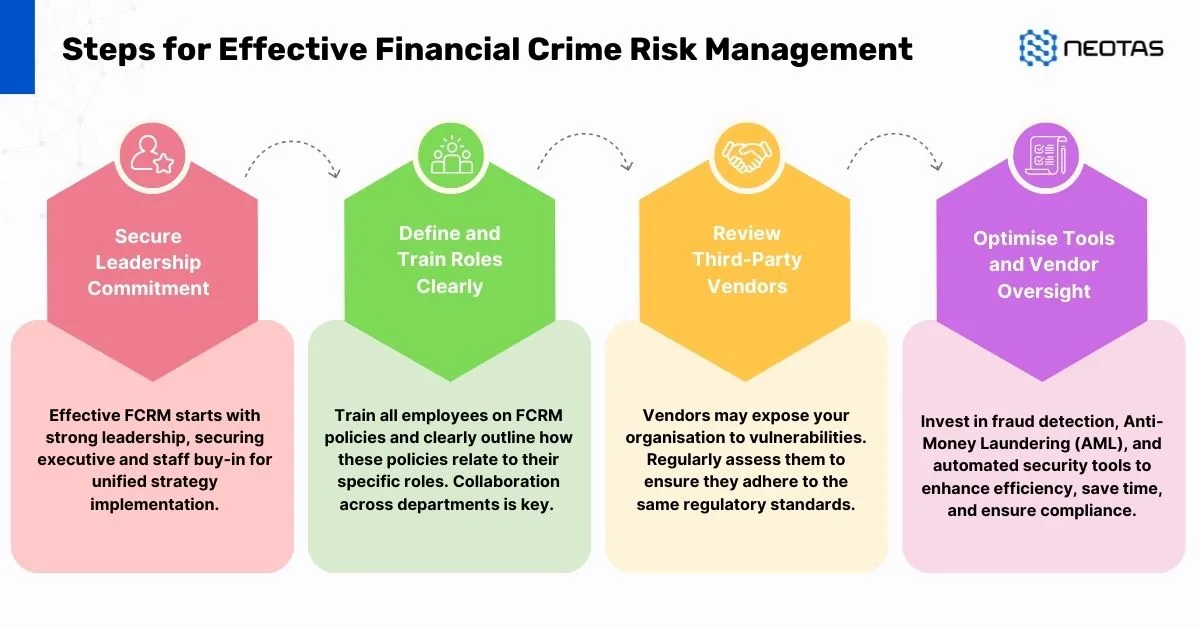
Build a Robust FCC Framework:
Financial institutions must take decisive steps to strengthen their FCC frameworks in the face of evolving threats and regulations. Here’s how to get started:
- Assess Your Current Compliance Programme:
Conduct a comprehensive review of your existing FCC framework, identifying gaps and areas for improvement. - Leverage Technology:
Invest in advanced compliance tools, such as AI-powered monitoring systems, blockchain analytics, and integrated platforms, to enhance efficiency and accuracy. - Enhance Employee Training:
Regularly update your workforce on emerging risks and regulatory changes. Develop a culture of compliance by making it an organisational priority. - Collaborate with Industry Stakeholders:
Engage with regulators, industry peers, and technology providers to stay informed about best practices, trends, and innovations in FCC. - Stay Proactive:
Monitor regulatory developments, emerging threats, and technological advancements to ensure your compliance programme remains agile and effective.
Read more about Financial Crime Compliance Framework
About Neotas Due Diligence
Neotas Platform covers 600Bn+ archived web pages, 1.8Bn+ court records, 198M+ corporate records, global social media platforms, and 40,000+ Media sources from over 100 countries to help you build a comprehensive picture of the team. It’s a world-first, searching beyond Google. Neotas’ diligence uncovers illicit activities, reducing financial and reputational risk.
Neotas is a leader in harnessing the combined power of open-source intelligence (OSINT), along with social media, and a wide range of traditional data sources using cutting edge technology to deliver comprehensive AML solutions. We help uncover hidden risks using a combination of technology and our team of over 100 trained research analysts to protect our customers from making risky investment or other business decisions.
💼 WHAT WE OFFER
- Complete, Automated AML Solutions – Tailored to meet regulatory requirements for detecting and preventing money laundering activities.
- Seamless, Easy-to-Use Platform – Featuring interactive dashboards and management tools for efficient oversight.
- Single Workflow Platform – Consolidating all AML operations into a unified, easy-to-navigate system.
- OSINT-Driven Intelligence – Incorporating unstructured and structured data from open sources to uncover hidden risks.
- Dynamic Monitoring & Alerts – Real-time monitoring of individuals, entities, and transactions, with risk-based alert frequencies.
- Enhanced Due Diligence – Comprehensive checks on high-risk entities, including AML Regulated organisations, vendors, and customers.
- Seamless Integration – Easily integrates with existing AML, KYC, and compliance systems.
- Managed Service Option – Access to expert-driven, report-based AML assessments.
- Comprehensive Value Chain Monitoring – Covering all relevant actors, from customers to intermediaries and vendors.
Our automated AML monitoring continually tracks high-risk individuals and entities, providing immediate alerts on any significant changes or suspicious activities.
Neotas is a leading SaaS platform widely deployed by organisations for investigating suspected financial crime.
📘AML Case Studies:
- Case Study: OSINT for EDD & AML Compliance
- Overcoming EDD Challenges on High Risk Customers
- Neotas Open Source Intelligence (OSINT) based AML Solution sees beneath the surface
- ESG Risks Uncovered In Investigation For Global Private Equity Firm
- Management Due Diligence Reveals Abusive CEO
- Ongoing Monitoring Protects Credit Against Subsidiary Threat
- AML Compliance and Fraud Detection – How to Spot a Money Launderer and Prevent It
💼 AML Solutions:
- Risk-Based Approach (RBA) to AML & KYC risk management
- Anti-Money Laundering (AML) Compliance
- Anti-Money Laundering (AML) Checks
- Anti-Money Laundering (AML) Regulations
- Anti-Money Laundering (AML) Compliance Checklist
- Anti-Money Laundering (AML) Compliance Checklist for Banks
- Anti-Money Laundering (AML) Transaction Monitoring
- Money Laundering Reporting Officer (MLRO) – Roles and Responsibilities of an MLRO
- What is Customer Due Diligence in Banking and Financial Services?
Manage Financial Compliance and Business Risk with Neotas AML Solutions.
Neotas is an Enhanced Due Diligence Platform that leverages AI to join the dots between Corporate Records, Adverse Media and Open Source Intelligence (OSINT).
🗓️ Schedule a Call or Book a Demo of Neotas Anti-money laundering (AML) Solutions.
FAQs on Financial Crime Compliance
What are the main components of FCC?
The main components of Financial Crime Compliance (FCC) include risk assessment, policies and procedures, transaction monitoring, sanctions screening, reporting and record-keeping, and training and awareness. Risk assessments identify vulnerabilities, while policies outline measures to mitigate them. Transaction monitoring detects unusual activities, sanctions screening ensures compliance with global regulations, and reporting enables regulatory adherence through mechanisms like Suspicious Activity Reports (SARs). Training equips employees with the skills to identify and respond to financial crime risks effectively. These components work cohesively to safeguard organisations against financial crime and ensure regulatory compliance.
What is financial crime compliance description?
Financial crime compliance involves implementing policies, procedures, and systems to detect, prevent, and mitigate risks associated with financial crimes. It includes activities such as conducting risk assessments, monitoring transactions, screening against sanctions lists, and filing regulatory reports. Effective compliance ensures adherence to laws, protects organisations from illicit activities, and preserves trust in financial systems.
How can small financial institutions manage compliance costs?
Small financial institutions can manage compliance costs by adopting a risk-based approach, focusing on high-risk areas, and leveraging cost-effective technology solutions. Outsourcing specific compliance functions, such as transaction monitoring or sanctions screening, can reduce overheads. RegTech solutions, often scalable and affordable, can automate processes like Know Your Customer (KYC) checks, reducing manual effort. Additionally, collaborating with industry bodies for shared resources or training programmes helps distribute costs. A strategic focus on efficiency, prioritisation, and technology adoption ensures compliance without overstretching budgets.
What are the penalties for non-compliance with FCC regulations?
Penalties for non-compliance with FCC regulations can be severe, including substantial fines, legal action, and reputational damage. Financial institutions have faced multi-billion-dollar fines for lapses in anti-money laundering (AML) and sanctions compliance. For example, breaches of the Bank Secrecy Act (BSA) in the US can lead to both monetary penalties and criminal prosecution. Beyond financial penalties, non-compliance can result in operational restrictions, suspension of licences, and loss of customer trust, significantly impacting an institution’s long-term viability and credibility.
How does technology help in achieving FCC objectives?
Technology enhances FCC objectives by automating complex processes, improving accuracy, and increasing efficiency. Tools like AI and machine learning enable advanced transaction monitoring, reducing false positives and prioritising high-risk cases. Blockchain technology ensures transparency and traceability in digital transactions, aiding compliance efforts. Integrated FCC platforms consolidate functions like KYC, sanctions screening, and fraud detection into a single system, simplifying workflows. These innovations reduce manual workload, improve risk detection, and enable institutions to meet regulatory requirements in real time.
What is the financial crime compliance process?
The financial crime compliance process involves several key steps: conducting risk assessments, implementing policies and procedures, onboarding customers with KYC checks, monitoring transactions for suspicious activity, and filing regulatory reports such as SARs. Institutions also screen customers and transactions against sanctions lists and adverse media. Continuous training ensures employees stay updated on compliance requirements. Periodic reviews and audits evaluate the effectiveness of the FCC framework, allowing organisations to address gaps and adapt to emerging threats.
What does a financial crime compliance officer do?
A financial crime compliance officer oversees the development and implementation of measures to prevent financial crimes such as money laundering, fraud, and terrorism financing. Responsibilities include conducting risk assessments, monitoring transactions, ensuring regulatory adherence, and filing reports to authorities. They also manage KYC processes, perform sanctions screening, and provide employee training. As key advisors to senior management, they ensure the organisation’s FCC framework aligns with regulatory requirements and emerging risks, safeguarding its reputation and operational integrity.
What is the financial crime compliance framework?
The financial crime compliance framework is a structured system that integrates policies, procedures, technology, and training to identify, prevent, and mitigate financial crime risks. It includes core components such as risk assessment, AML transaction monitoring, sanctions screening, and regulatory reporting. The framework aligns with global standards, such as those set by FATF, and adapts to specific organisational needs. A robust framework ensures regulatory compliance, protects against financial crime, and maintains the trust of stakeholders.
What is the difference between compliance and financial crime?
Compliance refers to the broader adherence to legal, regulatory, and ethical standards governing an organisation’s operations. Financial crime, on the other hand, focuses specifically on illegal activities such as money laundering, fraud, and terrorism financing. Financial Crime Compliance (FCC) is a subset of compliance, aimed at preventing, detecting, and mitigating risks associated with financial crime. While compliance encompasses areas like corporate governance and data protection, FCC is concerned with safeguarding financial systems from criminal exploitation.
What are the three main areas of financial crime that the FCA controls?
The UK Financial Conduct Authority (FCA) focuses on three main areas of financial crime: anti-money laundering (AML), fraud prevention, and sanctions compliance. AML efforts include ensuring firms adhere to KYC and transaction monitoring standards. Fraud prevention involves safeguarding against activities like identity theft and insider trading. Sanctions compliance ensures firms do not engage with individuals or entities subject to global sanctions. The FCA’s oversight helps maintain market integrity and protect consumers.
Who can be an AML compliance officer?
An AML compliance officer should possess a strong understanding of anti-money laundering regulations, financial crime risks, and compliance processes. Qualifications often include a degree in finance, law, or business, coupled with certifications such as ACAMS or ICA diplomas. Experience in regulatory compliance, auditing, or risk management is advantageous. Strong analytical, communication, and problem-solving skills are essential to effectively oversee AML programmes and liaise with regulatory authorities.
What are the three elements of financial crime?
The three core elements of financial crime are fraud, money laundering, and corruption. Fraud involves deceptive activities aimed at gaining financial or personal benefits. Money laundering disguises the origins of illicit funds, making them appear legitimate. Corruption encompasses unethical practices, such as bribery, to gain undue advantage. Together, these elements undermine financial systems and pose significant risks to institutions and economies.
What is the difference between compliance and AML?
Compliance encompasses adherence to all legal, regulatory, and ethical standards, while AML (Anti-Money Laundering) focuses specifically on combating money laundering and related financial crimes. AML is a subset of compliance, involving measures like transaction monitoring, sanctions screening, and customer due diligence. Compliance also covers broader areas like data protection, corporate governance, and consumer protection, making it a more expansive field.
What is the purpose of financial compliance?
The purpose of financial compliance is to ensure organisations adhere to regulations, maintain ethical standards, and operate transparently. It protects institutions from financial crime risks, prevents regulatory breaches, and safeguards customer trust. By adhering to financial compliance standards, organisations can mitigate risks such as money laundering, fraud, and sanctions violations while fostering a stable and secure financial ecosystem.
What are examples of financial crime?
Examples of financial crime include money laundering, fraud, bribery, corruption, terrorist financing, and sanctions evasion. Cyber-enabled crimes, such as phishing, ransomware attacks, and cryptocurrency-related fraud, are increasingly prevalent. Other examples include insider trading, tax evasion, and identity theft. These activities exploit financial systems for illegal gain, posing significant risks to institutions and economies.
What are KYC rules?
KYC (Know Your Customer) rules require financial institutions to verify the identity of customers, understand their financial activities, and assess associated risks. Key components include customer identification and verification, ongoing transaction monitoring, and enhanced due diligence for high-risk accounts. KYC rules are a critical part of AML efforts, helping institutions detect and prevent financial crime.

